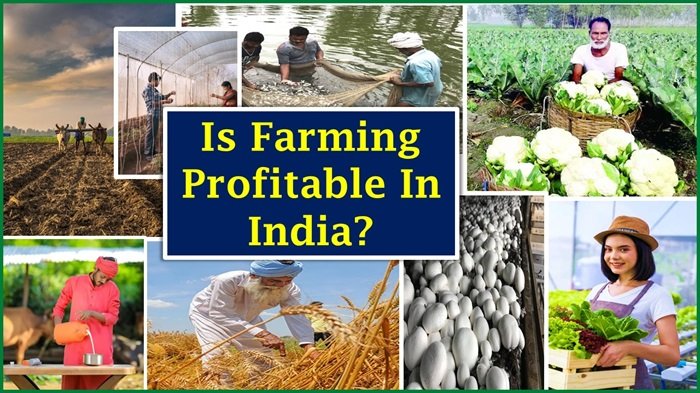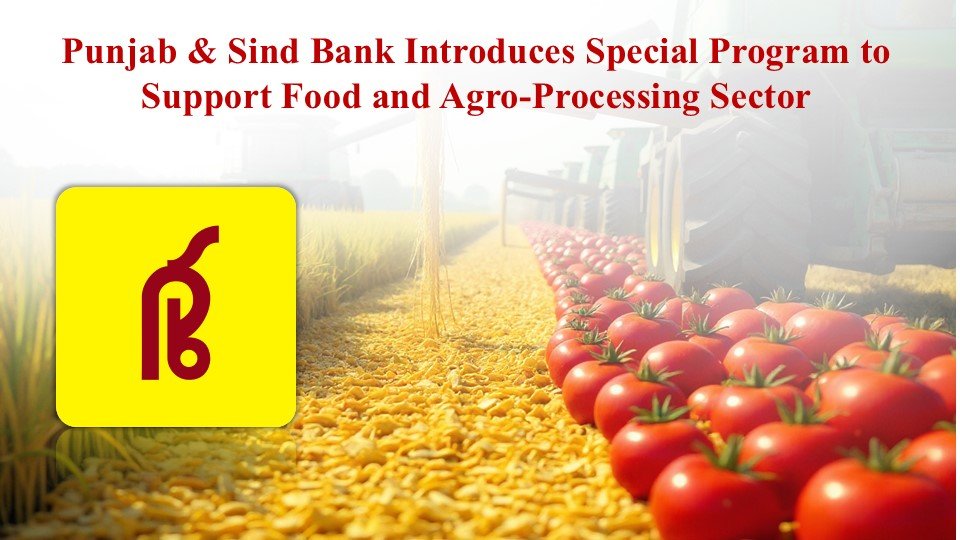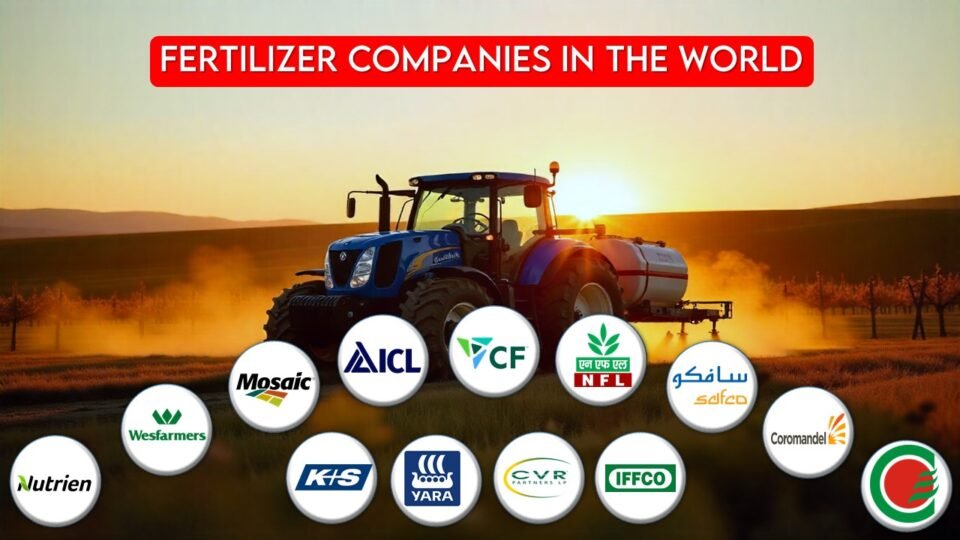What comes to our mind when we think about the farming of farmers? It would be skinny men wearing dirty or torn clothes with a face that tries to conceal the torn lives of their families. Well, this is true in the case of India. Our policies and plans haven’t been able to revive the sector that employs 45% of Indians. But these aren’t the problems related to farming only, they are macroeconomic problems that pertain to the whole country. So, on this backdrop, we cannot assume farming to be the agent of poverty nor can we conclusively answer the question: Is farming profitable in India?
Farming is a profitable business in India as well as anywhere in the world. Numerous people in India have taken up various farming businesses and have produced unbelievable profits. Some people make millions of dollars in revenue just from farming and farming-related activities. This is because agriculture as a profession will always stay in demand. As the population grows, this demand will only increase.
But there is an important point. Choosing a particular farming business depends on the profitability of that business. So, Which is the most profitable farming in India? Henceforth we will be discussing farming businesses and will be checking their profitability.
Is Rice Farming Profitable in India?
Rice farming in India holds significant importance as it is the most common staple food in many Asian countries, including India.
Production Volume:
- India is a major rice producer, with states like West Bengal, Uttar Pradesh, Andhra Pradesh, Punjab, Tamil Nadu, Bihar, Chhattisgarh, and Odisha leading the way.
- Over 3,000 varieties of rice are grown across the country, some of which mature in as little as 60 to 75 days.
Profitability Trends:
- Recent research indicates that the profitability of rice farmers has increased significantly over the last four years.
- In West Bengal, Punjab, Haryana, Uttar Pradesh, Bihar, Chhattisgarh, Andhra Pradesh, Telangana, and Karnataka, the average profitability per acre has risen from ₹15,000 to an impressive ₹26,000 (a 73% increase).
Farm Business Income:
- While some states still face challenges, overall, rice production has seen growth due to farm innovations.
- However, it’s essential to note that many states still register negative profitability in rice cultivation.
- The farm business income remains positive, emphasizing the need for sustainable policies to ensure food security for the nation.
Is Wheat Farming Profitable in India?
Wheat is the second most produced and consumed crop in India after rice. Wheat is the staple food in many states in India. Let us find out the profitability of wheat farming by analyzing wheat farming on 1 acre of land.
Cost of Cultivation for 1 Acre of Wheat:
- The cost of input for wheat farming in one acre of land is approximately ₹12,210.
- Expenses: cost of land preparation, seeds, sowing, fertilizers, intercultural operations, plant protection measures, harvesting, and threshing.
Average Production and Gross Return:
- The average production of wheat per acre is estimated to be around 1,618.40 kg.
- The gross return from wheat production amounts to approximately ₹45,315.39 per acre.
Net Profit from 1 Acre of Wheat Farming:
- To calculate the net profit, we subtract the total cost of cultivation from the gross return:
- Net Profit = Gross Return – Total Cost
- Net Profit = ₹45,315.39 – ₹12,210 = ₹33,105.39
Profit Margin:
- The profit margin can be expressed as a percentage:
- Profit Margin = (Net Profit / Total Cost) × 100
- Profit Margin = (₹33,105.39 / ₹12,210) × 100 ≈ 271%
In summary, wheat farming in India can be profitable, especially when managed efficiently. Farmers can earn a net profit of approximately ₹33,105.39 per acre within a short duration of 3 to 4 months.

Is Dairy Farming Profitable in India?
Asking whether Dairy farming is profitable or not is frivolous as Dairy farming is one of the top 3 most profitable farming businesses in India. Milk is the main product that we obtain from Dairy farming. However, in addition to milk, we get butter, ghee, paneer, and other products derived from milk through processing and have high demand in the market. Cow dung and cow urine are other products that have uses in agriculture.
The profitability of dairy farming in India depends on several factors. Capital expenditure, recurring expenses, feeding expenses, labor, management, Feed Conversion Ratio (FCR), and morbidity influence the profitability of Dairy farming in India.
Some basic calculations of an ideal Dairy farm are as follows
Selling Price:
the price of milk in India charged by different dairy farms varies between ₹45 to ₹60 per liter.
Income: the figures which help to estimate income from dairy farms are In urban areas, one liter of milk fetches around ₹60.
One cow can produce at least 15 liters of milk on average. Therefore the total sales revenue gained from selling 15 liters of milk is ₹900. So, one cow can produce ₹900 per day from milk alone.
Cattle feed for one cow costs approximately ₹130 per day. Deducting this expense, the remaining amount earned is ₹770 per day per cow.
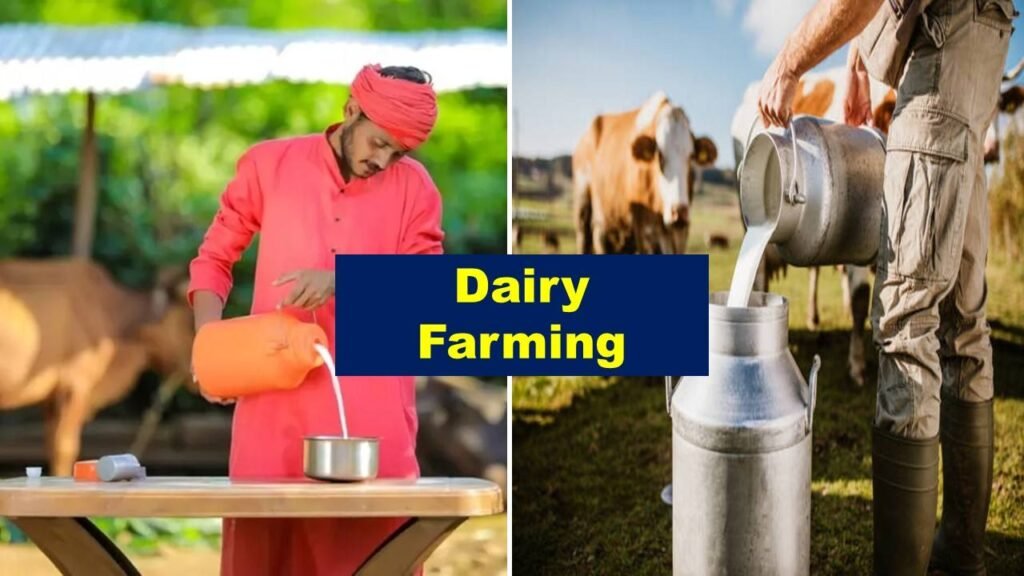
Other expenses: apart from cattle feed, other expenses in Dairy farming are deworming of cattle, insemination, water, and electricity among others.
By-products and processed products: farmers can also sell cow dung and cow urine which are by-products and butter, ghee, paneer, and processed products to earn additional income.
Growth of the Dairy Industry:
The dairy industry in India is growing at a rapid rate. It has grown at the rate of 6.4 percent in the last 4-5 years. It is clear from above that Dairy farming is profitable in India.
Is Hydroponic Farming Profitable in India?
It is a no-soil culture of plants and the water can be mixed with fertilisers for better growth. The profitability of Hydroponic farming depends on
- Cost of setting up the farm
- Ongoing or operating cost
- The market value of the produce
Here are some calculations
Cost of Setting Up a Hydroponic Farm:
The main challenge is the investment cost of setting up a hydroponics farm, making it difficult for small farmers and start-ups to enter the market.
Ongoing cost: nutrients, water, electricity, and maintenance require a significant amount of money and are included under ongoing costs.
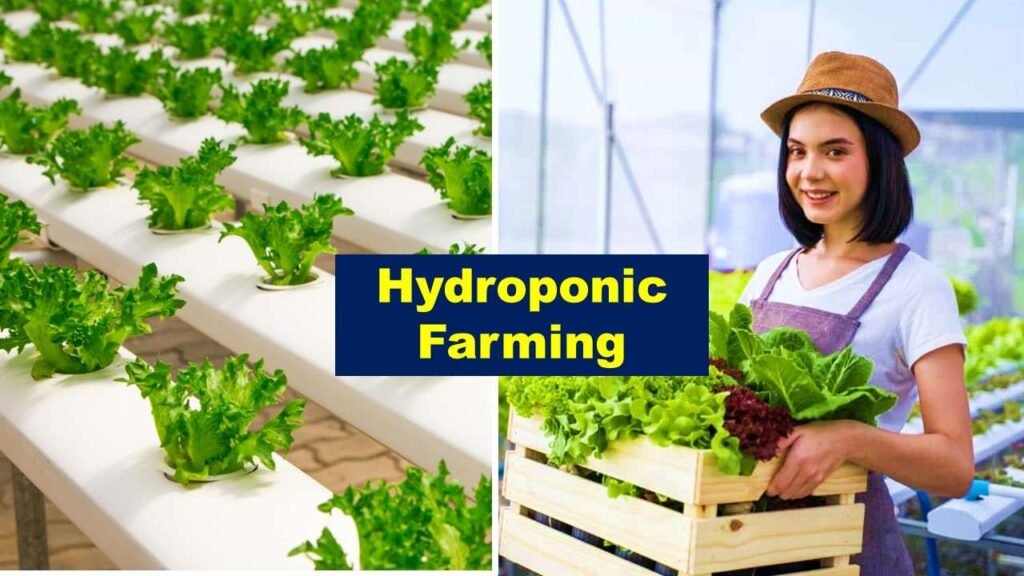
The Market value of the produce:
Market value of the produce is a significant factor in determining the profitability of hydroponic farming. For example, with an average yield of 3200 kg per crop cycle, the market value of the crop amounts to ₹7.7 lakhs.
Profit:
After subtracting the recurring cost of ₹80,000, the profit margin per cycle stands at ₹6.9 lakhs. Based on research, a 5000-square-foot hydroponic farm in India can generate a profit margin of approximately ₹6.9 lakhs per cycle. This gives a profit margin of approximately ₹138 per square foot per cycle.
Also Read
- 25 Profitable Agriculture Business Ideas with Low Investment
- Earn up to 3 lakhs in 3 months through Tulsi Farming
Is Organic Farming Profitable in India?
The use of chemicals in farming has created an aversion to fruits and vegetables produced by commercial cultivation practices that utilize chemical pesticides. This increased the demand for organic products which are produced without the use of harmful chemicals and thus organic farming became popular.
Now to answer the question of whether organic farming is profitable or not, the answer is: Yes it is profitable in India. The factors which control the profitability of organic farming are
- Cost of setting up
- Ongoing cost
- The market value of the produce
Cost of setting up an organic farm:
The cost of setting up an organic farm varies significantly on the type of crops used, methods used, value of land, infrastructure (fencing, irrigation, storage, etc.), machinery (tractor, tiller, seeder, etc.), and for seeds, seedlings, and soil amendments. On average, for 1 ha of land, the initial investment is between ₹10 lakhs to ₹20 lakhs.
Ongoing or recurring costs:
The cost of labor, organic fertilizers, pest control, water, electricity, maintenance, and administrative charges come under the recurring cost. For 1 ha of land, the total operational cost comes between ₹5 lakhs to ₹10 lakhs.
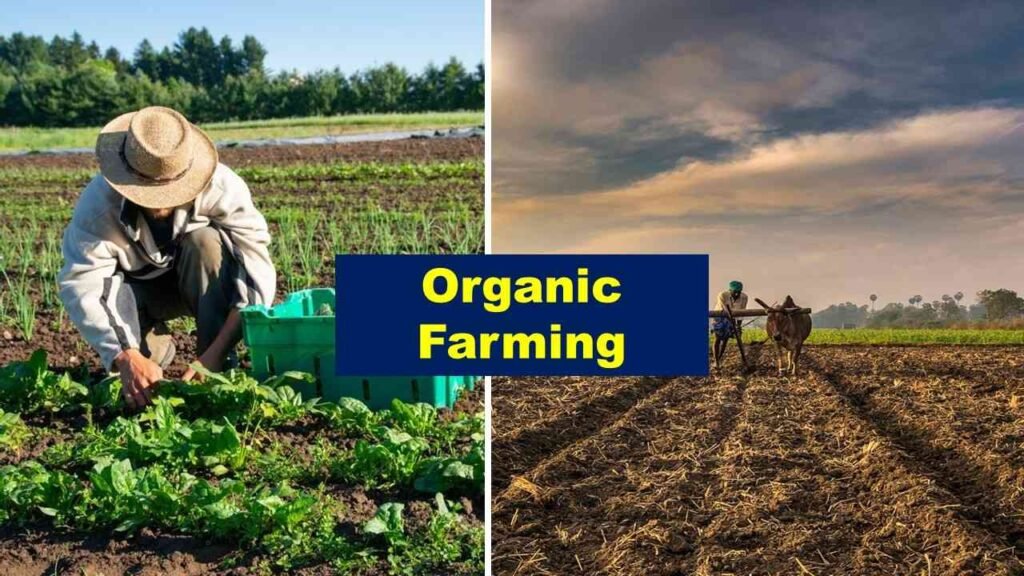
Market value:
Organic products fetch premium prices in domestic and export markets. The products are 50% to 200% costlier than conventionally produced products. An organic farm of 1 ha growing fruits or vegetables integrated with livestock can fetch returns of ₹20 lakhs to ₹40 lakhs.
Profitability:
organic farming is highly profitable because of its premium prices and high demand. On average an Organic farm of 1 ha can produce ₹15 lakhs to ₹30 lakhs in profits.
Is Poultry Farming Profitable in India?
Yes! Poultry farming is a profitable business in India. Chickens are the most reared poultry birds in India. The profitability of poultry farming depends on market demand and supply, revenue streams, and costs and expenses.
- Market demand and supply: market demand is important in the case of any business. There is positive yet consistent demand for poultry meat and eggs. Eggs and meat are regular constituents in diets and are rich in protein—this consistent demand fuels supply.
- Revenue streams: the primary revenue sources for poultry farmers are eggs, meat, and manure (poultry excreta). The broiler poultry income focuses on meat and the layer poultry income focuses on egg production.
- Cost and expenses: feed, labor, infrastructure, disease, and pest management contribute towards costs and expenses. Proper management ensures consistently lower costs and hence higher profit margins.
- Profitability: by investing ₹4-5 lakhs we can earn an annual revenue of ₹20 lakhs. The total profit on the investment will be around ₹4-5 lakhs annually. However, with the sale of by-products like poultry manure, an additional ₹20,000 per annum can be obtained.
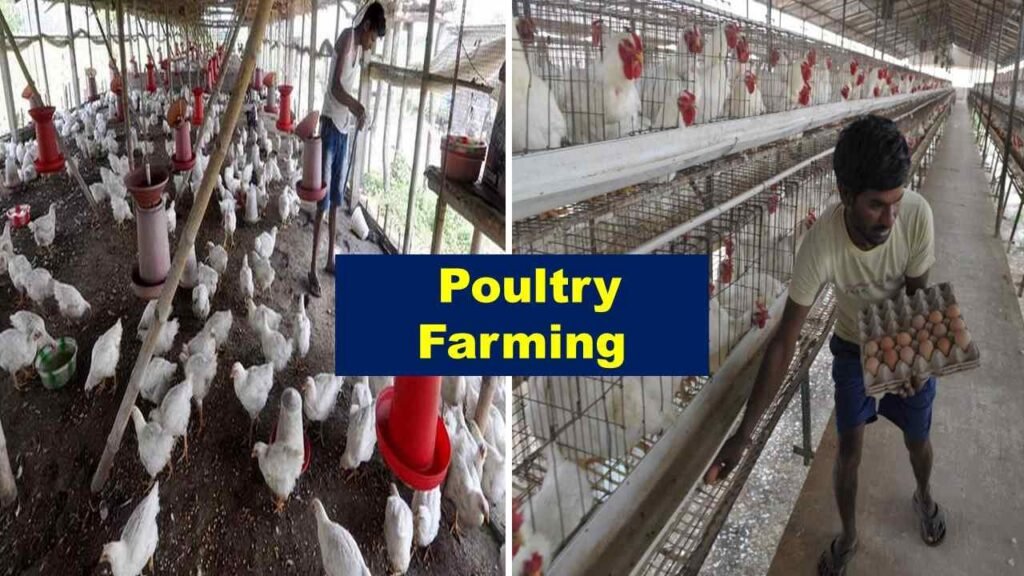
Is Fish Farming a Profitable Business in India?
Fish and other aquaculture products are the most exported commodity in India. And therefore fish farming is a profitable business in India. Various factors on which the profitability of fish farming depends are
- Market demand and supply: the demand for fish and fish products is growing because of the health advantages of their meat, oil, and other products. On average a person eats 42 lbs of fish per year.
- Revenue dreams: unlike poultry and dairy farming, aquaculture doesn’t have many revenue streams. Fish and fish oil are the revenue streams for fish farmers.
- Cost and expenses: managing feed, labor, and infrastructure costs is crucial in fish farming. The profitability of fish farming depends on the management of these factors.
- Profitability: fish farming is undoubtedly profitable since the farming uses cheap nutritious ingredients at the lower level of the food chain. In integrated farming fish farming is highly profitable as they feed on poultry waste.

Is Vegetable Farming Profitable in India?
Yes! Vegetable farming is profitable in India. Remember your childhood when your mom used to tell you to eat your fruits and veggies? Well, this dialogue will continue and will be transferred from one generation to another. As long as it continues, vegetables won’t ever go out of demand.
The factors that contribute to the profitability of vegetable farming are
- Diverse climate: India’s diverse climate allows the production of wide range of vegetables.
- Mechanization: the use of machinery in agriculture has improved the efficiency of farming and this has increased production and reduced costs.
- High demand: vegetables will always be in high demand as they are indispensable parts of our diet.
However, the type of vegetable grown, type of farming practice used, market prices and cost of production determine the net profit from vegetable farming. For example in the case of vegetable farming in 1 ha, the average profit can be between ₹60,000 to ₹1 lakh rupees. One important point is that in the case of vegetable farming, it is the production technology that matters the most. If you follow it correctly, then you can make handsome profits.

Is Greenhouse Farming Profitable in India?
The infrastructure alone cost millions of rupees. However, the high production capacity clubbed with consistent supply throughout the year makes greenhouse farming profitable.
The profitability of greenhouse farming
The recurring costs of greenhouse farming are on par with conventional crop production costs. However, it is the fixed cost that demands attention. The capital investment for greenhouse farming can be anywhere between ₹40 lakhs to ₹1.5 crores depending on the type of greenhouse and the area.
This initial investment cost will easily be offset by the stable year-round revenues that can be obtained. After meeting all the obligations there will still be a handsome sum of money left as profits.

How Profitable is Mushroom Farming in India?
Mushrooms were never popular in India and they were not part of our diets. However, after understanding the nutritional benefits of mushrooms, we started to make room for them in our food plates. Within a few years, the demand for mushrooms increases exponentially. This urged farmers to try the mushroom farming business which requires very low costs. Hence, mushroom farming became a fruitful venture in India.
Here are the factors that determine the profitability of mushroom farming in India
- High demand: Mushrooms have high medicinal and pharmaceutical value along with great culinary value. The acceptance of mushroom medicine in the form of tablets and capsules along with greater customer satisfaction has tremendously increased the demand for mushrooms.
- Variety: 2000 varieties of macrofungi are edible and 80 of these are under economic cultivation.
- Controlled environments: mushrooms are grown indoors in special beds known as compost beds. The conditions required are
- Temperature: 22-25 degree Celsius
- Humidity: 85-90%
- Quick harvest: mushrooms can be harvested within 3 weeks of initiation. This allows multiple rounds of production.
- Profitability: mushroom farming can produce at least ₹1000 profit per square foot area. There are examples where mushroom farming has made ₹1,90,000 profit per year.
Hence, with proper management, mushroom farming is a profitable enterprise.
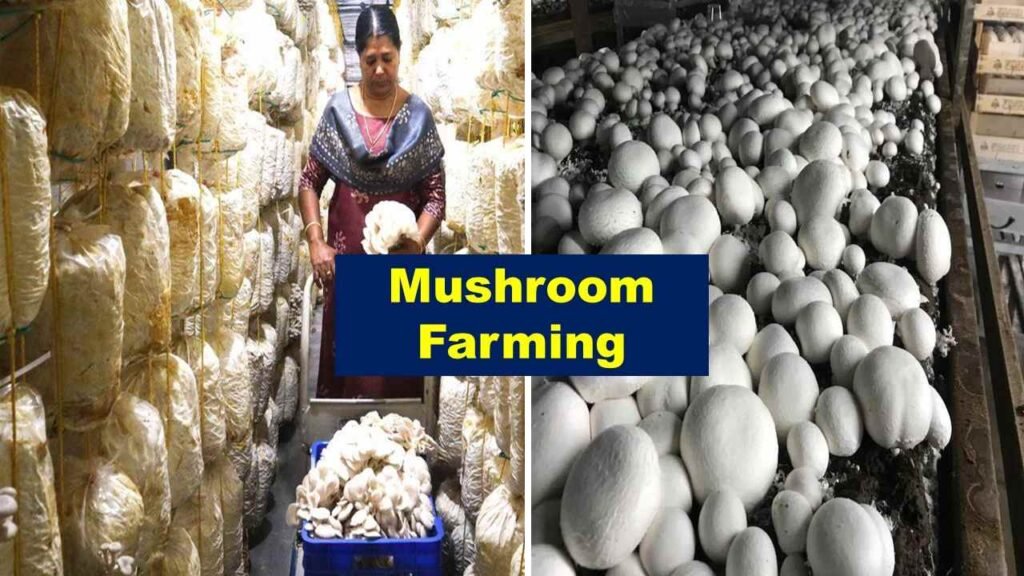
Is Farming Profitable in India?
In India rice, wheat, maize, etc. are cultivated in huge areas. Although on paper these farming businesses seem profitable, in reality, it is the opposite. Voids in the supply chain, imprope pricing, exploitation by middlemen, and low adaptation of technologies make traditional farming practices loss-making ventures in India.
However, modern farming techniques like greenhouse farming, hydroponics, mushroom farming, etc. have proven their profitability in India. The existence of well-structured and organized supply chain fueled by cooperatives and corporates along with efficient management ensures that these ventures stay profitable.
So, if we analyze traditional and modern farming practices, there are 2 ways to achieve profitability. Either update yourself and use the latest technologies in traditional farming or go with modern farming practices.
Also Read
Summing Up
In our quest to find which farming is more profitable in India, we have analyzed the profitability of the best farming practices done today. It is impossible to determine a clear winner because there are lot of factors that need to be taken into account and these topics are subjective. That aside, one thing that we would like to stress is the role of management.
Whatever farming idea you choose, the profitability of that idea depends on how well you manage the business. Create a structured plan of what you are going to do. Record every activity on the farm and every rupee coming in and going out of the business. Determine how you will mitigate risk. Plan everything. With proper management, you can profit from any venture you undertake.
Agri-Business Idea Generator

Latest Post
- November Issue 2025- Times of Agriculture Magazine
- Punjab & Sind Bank Introduces Special Program to Support Food and Agro-Processing Sector
- Beyond Classrooms and Gardens: How a Professor Turned His Passion into Purpose
- October Issue 2025- Times of Agriculture Magazine
- Top 10 Pesticide Companies in the World
- September Issue 2025- Times of Agriculture Magazine
- Top 15 Fertilizer Companies in the World
- Top 10 Vegetable Farming Profit Per Acre in India
- August 2025 : Times of Agriculture Magazine (AgriVoltaics Farming)


